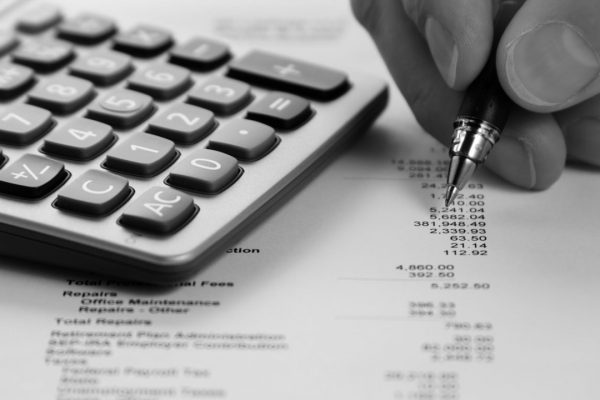While you’re in the process of building out your business plan, it’s a good idea to take a “macro and micro” approach. You’ll be deep-diving into specific market research, strengths and weaknesses, and your mission statement as the document develops, so every now and then, take a step back and review the business plan on the whole. Does everything make sense if an outsider were to review it? Are there any gaps in logic, or does this share the complete story of the business? Your financial plan (part 8 of your business plan document) is an area where you’ll want to ensure that your strategy and numbers are watertight. It will determine the viability of your business, and it will be the focal point for investors who are interested in learning more – in short, it can be where your business will sink or swim.

Financial Plan Start-Up Costs
Depending on the point at which you engage with a business, you may need to consider the costs involved in bringing the business to life (for example, you might be purchasing a business that is already up and running). If you’re starting a business from scratch, the first section of your financial plan will summarise these initial costs – accuracy and transparency are essential here. You should include everything from property costs, purchase of launch stock, equipment, and salaries for critical staff members.
Funding
Next, it’s time to discuss where your funds are coming from. You might personally be investing a large sum, or managing a series of investments from different sources, and it’s important to share enough detail to highlight your accountability and “skin in the game” with your business for future investors if this is part of your plan.
Break-Even Date
Your financial plan is all about the details, and this certainly comes into play for working out your break-even date. You’re asking the question, “When will this business start to pay for its ongoing costs?”
This calculation requires you to estimate the volume of sales that are required to reach break-even, as well as how long you’ll need to be in business to get there while being realistic about what you can achieve by when.
To support this process, it’s wise to check out specific break-even analysis examples and methods that are relevant to your business in particular (for instance, service-based businesses that may charge hourly), to ensure the calculation process is specific to your situation.
As a baseline, you’ll need to:
1. Identify your fixed and variable business costs.
2. Tally your total fixed costs.
3. Calculate the average variable cost per product you sell or service you deliver (this will be your variable cost per unit).
4. Minus your variable cost per unit from the unit sales price, giving you your profit margin.
5. Divide your total fixed cost by your profit margin – this brings you to your “break-even sales volume.”
Finally, work out your estimate of the average production or service capacity – you can do this by day or by week (taking into account all parts of the supply chain for accuracy). Then, simply divide the break-even sales volume by the production capacity – this will leave you with a number that represents how long until you hit your break-even date.
Once this is done, you’ll come to a specific date that you can share in your business plan. Download the ANZ break-even calculation template (XLS) or use the break-even analyser to get an indication of how many units your business will need to sell to breakeven. Visit ANZ Small Business Hub for instructions on use.
Financial Plan Profit and Loss Forecast
In this section, you’ll want to revert to a table structure, including a brief summary of your profit and loss forecast for the next financial year ahead, and then go into the details of this forecast. For new businesses to the market, you’ll rely more on market research (discussed in detail in our earlier posts), reliable data and statistics. You also have the option to discuss multiple potential forecasts, showing ideal, poor and neutral outcomes – remember, the financial plan is the place to be completely realistic. Download the ANZ profit and loss template (XLS) to forecast the year ahead. Visit ANZ Small Business Hub for instructions.
Cash Flow Forecast
The final component of your financial plan, the cash flow forecast, details your estimated cash flow for the upcoming 3-5 years, backed up by a comprehensive forecast for the upcoming financial year.
Ups and downs in cash flow are normal for any business, and again, you may need to lean on market research and data if you’re a more fledgling business. What’s important is to know the times of the year that cash flow may drop, empowering you to work with what you have.
You’ve now completed your financial plan, an essential backbone of your business plan as a whole. Next time, we will move into a very different theme – your marketing strategy, diving into the methods to get your business noticed. Download the ANZ cash flow template (XLS). Visit ANZ Small Business Hub for instructions.
Download ANZ business plan template (Pdf).
Written by Craig Wood


